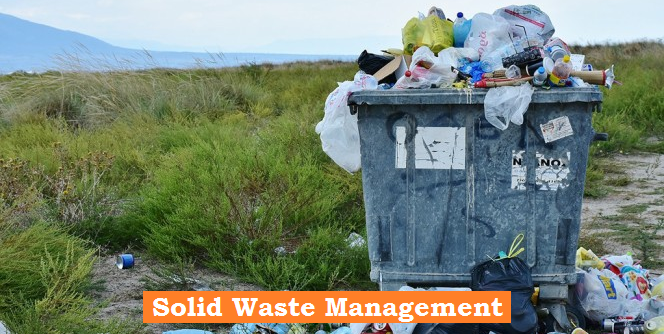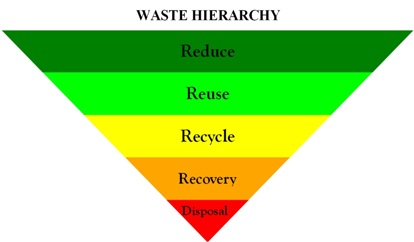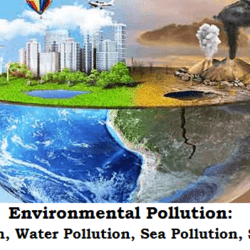
The waste material which is in any discarded form like garbage, reuse, sludge, treatment plant or any other pollution control facility is referred to as solid waste. Any material including solid, liquid, semi-solid or gaseous material coming from industrial, commercial, mining and agricultural operations and community activities is part of solid waste. It does not include domestic sewage and industrial discharges.
The term municipal solid waste (MSW) is generally used to describe most of the non-hazardous solid waste from a city, town or village that requires routine collection and transport to a processing or disposal site.
Solid waste management is a term that is used to refer to the process of collecting and treating solid wastes. It also offers solutions for recycling items that do not belong to garbage or trash.
Solid Waste in India
In India, every year about 4.3 crore tonnes waste material is collected by only 1.2 crore tonnes is treated or recycled, rest goes to landfills which is more than 70% and needs dire attention. Lack of space for dumping solid waste has become a serious problem in several cities and towns all over the world.
| Table of Contents: |
| Sources of solid waste Effects of Poor Solid Waste Management Control of Solid Waste Legislation in India |
Sources of solid waste
- Residential: Garbage from these places include food wastes, plastics, paper, glass, leather, cardboard, metals, yard wastes, ashes and special wastes like bulky household items like electronics, tires, batteries, old mattresses and used oil.
- Industrial: Industries produce solid waste in form of housekeeping wastes, food wastes, packaging wastes, ashes, construction and demolition materials, special wastes, medical wastes as well as other hazardous wastes.
- Commercial: Commercial buildings and facilities refer to hotels, markets, restaurants, go downs, stores and office buildings. Some of the solid wastes generated from these places include plastics, food wastes, metals, paper, glass, wood, cardboard materials, special wastes and other hazardous wastes.
- Institutional: The institutional centers like schools, colleges, prisons, military barracks and other government centers also produce solid waste which includes glass, rubber waste, plastics, food wastes, wood, paper, metals, cardboard materials, electronics, etc.
- Construction and Demolition Areas: Some of the solid wastes produced in these places include steel materials, concrete, wood, plastics, rubber, copper wires, dirt and glass.
- Municipal services: Some of the solid waste brought about by the municipal services includes, street cleaning, wastes from parks and beaches, wastewater treatment plants, etc.
- Agriculture: Among the wastes they produce include agricultural wastes, spoiled food, pesticide containers, etc.
- Biomedical: Some of these solid wastes from hospitals and chemical manufacturing firms include syringes, bandages, used gloves, drugs, paper, plastics, food wastes and chemicals.
Effects of Poor Solid Waste Management
- Spread of diseases: Decomposition of biodegradable material under improper and unhygienic conditions produces foul smell and provides breeding ground for disease causing germs.
- Air pollution and disease causing (Air Pollution): When solid waste like cleaning solvents, radioactive materials, e-waste and plastics etc are burned they produce harmful gases. These toxic gases have a potential of causing various diseases including cancer and also became a cause for global warming.
- Reduction of soil productivity (Soil Pollution): Solid wastes from industries are a source of toxic metals, hazardous wastes, and chemicals which reduce the soil productivity and make the food material contain harmful chemicals.
- Pollution of ground water and water bodies (Water Pollution): Toxic materials and chemicals may seep into the soil and pollute the water bodies and ground water.
Control of Solid Waste

Reduce, Reuse and Recycle are called as the “three R’s” of waste management and also sometimes called as the “waste hierarchy”.
An integrated waste management strategy includes the following components:
1. Reduction at Source (Reduce): One of the fundamental ways to reduce waste. This can be done by using less material when making a product, reuse of products on site, designing products or packaging to reduce their quantity.
2. Reusing: Used items can be reused by self or by others when donated like old books, clothes, furniture, etc.
3. Recycling: It is reusing some components of the waste that may have some economic value. Recycling has readily visible benefits such as conservation of resources reduction in energy used during manufacture and reducing pollution levels.
Some materials such as aluminum and steel can be recycled many times. Metal, paper, glass and plastics are recyclable. The problems associated with recycling are either technical or economical. Plastics are difficult to recycle because of the different types of polymer resins used in their production.

4. Disposal: Disposal of solid waste is done most commonly through a sanitary landfill or through incineration which are not completely free from harmful effects. Modern environment friendly techniques of waste disposal include:
- Bioremediation: Bioremediation uses natural as well as recombinant microorganisms to break down toxic and hazardous substances in a solid waste by aerobic and anaerobic means.
- Biomining: Biomining is the process of using microorganisms (microbes) to extract metals of economic interest from rock ores or mine waste. Biomining techniques may also be used to clean up sites that have been polluted with metals.
- Composting: It is the biological decomposition of organic waste such as food or plant material by bacteria, fungi, worms and other organisms under controlled aerobic (occurring in the presence of oxygen) conditions.
Legislation in India:
Solid Waste Management Rules 2016
- They focus on segregation of waste at source, responsibility on the manufacturer to dispose of sanitary and packaging wastes, user fees for collection, disposal and processing from the bulk generator.
- It has also been advised that the bio-degradable waste should be processed, treated and disposed of through composting or bio-methanation within the premises as far as possible.
- The rules promote the use of compost, conversion of waste into energy, revision of parameters for landfills location and capacity.
- The government has also constituted a Central Monitoring Committee under the chairmanship of Secretary, MoEF&CC to monitor the overall implementation of the rules.
Article 51A(g) of Indian Constitution
Article 51 A (g) of the Constitution of India makes it a fundamental duty of every citizen of India to protect and improve the natural environment including forests, lakes, rivers, and wildlife, and to have compassion for living creatures.

 Home
Home Syllabus
Syllabus Contact Us
Contact Us




